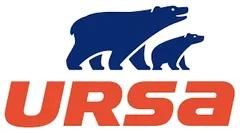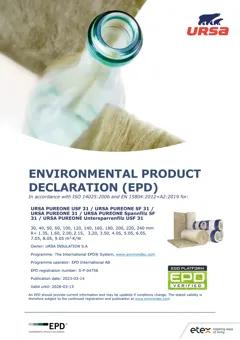

Other manufacturers with similar products
EPD: Glass wool insulation, unfaced, L = 0.031 W/mK, R = 1.35 m2K/W, 30 mm, 0.96 kg/m2, 32 kg/m3, PUREONE USF 31, SF 31, 31, Spannfilz SF 31, Untersparrenfilz USF 31, URSA INSULATION S.A
Introducing PUREONE USF 31 – the ultimate solution for energy efficiency and soundproofing. With superior thermal resistance and versatility, it's perfect for various insulation needs. Choose PUREONE for a sustainable, comfortable environment.
This unfaced glass wool insulation provides excellent thermal and acoustic performance in a lightweight, flexible form. Its fibrous texture allows easy handling and installation, making it an ideal choice for a variety of applications in residential and com...
Manufacturer:
URSA INSULATION S.A
Group:
Country of production:
Product name:
Glass wool insulation, unfaced
Commercial names:
PUREONE USF 31, SF 31, 31, Spannfilz SF 31, Untersparrenfilz USF 31
Category:
Insulation
Class:
Glass wool insulation
Type:
Glass wool unfaced
Environmental impacts
Global Warming Potential (A1-A3):
1.78 kg CO2e/m²
Technical specification:
L = 0.031 W/mK, R = 1.35 m²K/W, 30 mm, 0.96 kg/m², 32 kg/m³
Available units for calculation:
m², kg, ton, m³
Unique identifier (OCLID):
6498835f52d4c5637398ba2e
Sustainability data background information
EPD number:
S-P-04756
EPD program:
International EPD System
Publication year:
2023
Product Category Rules (PCR):
PCR 2019:14. Construction products (EN 15804+A2) Version 1.11. C-PCR-005 Thermal insulation products (EN 16783:2017) Version: 2019- 12-20
Environmental standard:
EN15804+A2
Data source:
EPD URSA PUREONE USF 31 / URSA PUREONE SF 31 / URSA PUREONE 31 / URSA PUREONE Spannfilz SF 31 / URSA PUREONE Untersparrenfilz USF 31
Verification status:
Third-party verified (as per ISO 14025)
Upstream database:
ecoinvent



